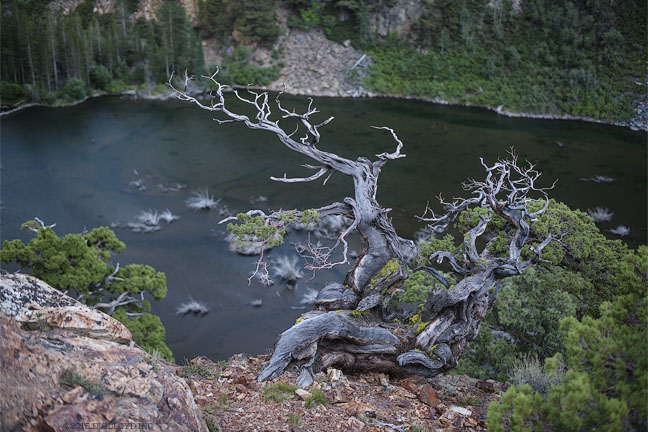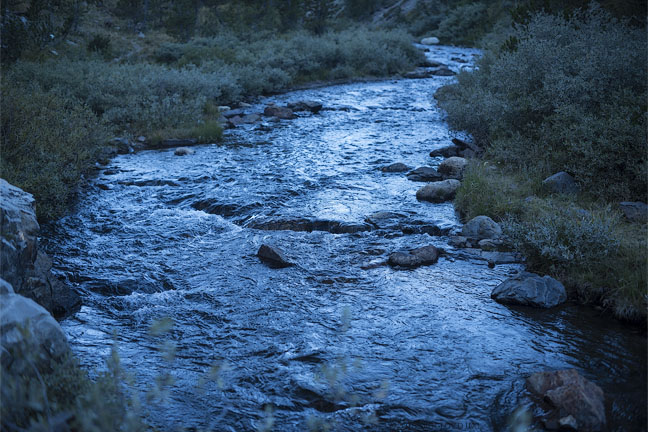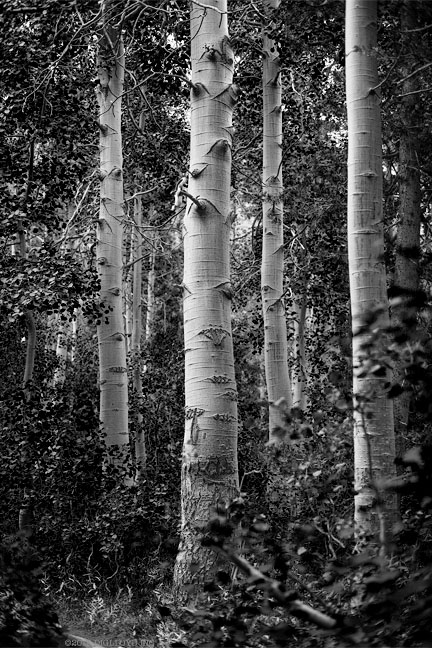
$220 SAVE $130 = 37.0% Western Digital 16.0TB Western Digital Ultrastar DC HC550 3.5-in… in Storage: Hard Drives
|

|

|

|

|

|
Zeiss Milvus 50mm f/1.4 and 85mm f/1.4 Anchor a Gorgeous New Lens Line
Related: apochromatic, bokeh, external articles by Lloyd, focusing, How-To, lens adapter, Live View, Sony mirrorless, Zeiss, Zeiss Lenses, ZEISS Lenspire, Zeiss Milvus, Zeiss Milvus 50mm f/1.4, Zeiss Milvus 85mm f/1.4
See best Zeiss lenses wish list and Nikon wish list and Canon wish list at B&H Photo.
Search this site for: Zeiss Otus, Zeiss Milvus, Zeiss Loxia, Zeiss Batis
Images on this page are presented as a cohesive group showing Lundy Canyon in the eastern Sierra Nevada, a favorite location of mine.
It is fitting that after eight years of using Zeiss lenses, I start this piece with some perspective. In 2007, Zeiss entered the DSLR lens market with the ZF 50mm f/1.4 Planar for Nikon. Back then my knowledge of Zeiss lenses was limited, but I was intrigued. And so by using a lens adapter the 50/1.4 Planar was put to use on the Canon 1DS. It was a revelation in imaging quality that led me down a path of shooting with nearly every DSLR, rangefinder and Sony mirrorless lens from Zeiss, and acquiring nearly all of them because the imaging characteristics aka “rendering/drawing style” is so appealing, and the build quality first rate.
The Zeiss offerings have been my mainstay “go to” lenses on Nikon and Canon (and now Sony) for good reason, and as a result my understanding of Zeiss lens characteristics and performance is deep and wide after nearly eight years of shooting with them. This article brings those insight to bear on the new Milvus lenses.
Fast forward to 2015: Zeiss offers twelve ZF.2/ZE lenses of classic style, as well as two truly world-class reference lenses in an elegant modern style: the Otus 55mm f/1.4 APO-Distagon and Otus 85mm f/1.4 APO-Planar (for Nikon and Canon). Both ZF.2/ZE and Otus can also all be used on Sony and other mirrorless brands via a lens adapter, so they make a great long-term investment across camera brand. Zeiss DSLR lenses are all manual focus—a plus for many usage scenarios, but those who must have autofocus should look at Zeiss Batis lenses on Sony mirrorless.

NIKON D810 + Zeiss Milvus 50mm f/1.4
[low-res image for bot]
Zeiss advances in style and optical quality
With such a wide range of focal lengths, what’s next?
As of September 2015, Zeiss raises its game across the entire ZF.2/ZE lineup by introducing the Milvus line. Adopting the luxuriously sleek build quality and operational feel of the Otus line, the Milvus line delivers a total makeover in physical design, along with optical improvements.
Physical design is superb. The curved and smooth-frosted anodized surface is appealing to the eye and hands—quality in its own class, beyond any other brand on the market. The engraved markings with white paint complement the high quality materials, and make seeing the markings in dim light easier (very few lenses today engrave markings, most print-on markings that can rub off over time). The lens hoods fit so precisely that they almost look built-in. Even the lens caps are excellent (the ZF.2/ZE line lens caps were/are fiddly). The lenses include multiple internal seals against dust and moisture as well as a rear rubber ring for the camera/lens interface.
The full range of focal lengths will roll out over time, but two totally redesigned optics debut, anchoring the Milvus lineup with exceptional performance: the Milvus 50mm f/1.4 Distagon and Milvus 85mm f/1.4 Planar. These two focal lengths reflect the reality that the classic ZF/ZE 50/1.4 Planar and 85/1.4 Planar designs are lovely in rendering but have performance limitations at wider apertures.
The new Milvus designs leap forward into the age of high-res digital sensors by offering far higher performance in every respect: sharpness and contrast at wider apertures, focus shift is banished, violet fringing is absent, field curvature is strictly controlled, distortion is very low. The Milvus 50/1.4 and 85/1.4 designs are eminently suitable for 36/42/50 megapixel cameras. The higher performance needs little analysis; it can be seen at a glance in the viewfinder, or in Live View. The imaging results reflect that clarity of view.
The Milvus 50mm f/1.4 Distagon utilizes a new high-performance Distagon-based construction, similar to the Otus 55mm f/1.4 APO-Distagon. It utilizes one aspherical element and four elements of anamolous partial dispersion glass.
The Milvus 85mm f/1.4 Planar is also all-new, an elegant performer in every regard, and while she carries the same Planar designation as her ZF.2 85/1.4 Planar sibling, the optics are highly corrected and greatly outperform the older 85/1.4 Planar. The Milvus 85/1.4 utilizes seven (7) elements of anamolous partial dispersion glass, and is a spherical design (no aspherics), thus delivering outstanding creamy bokeh.

NIKON D810 + Zeiss Milvus 85mm f/1.4
[low-res image for bot]
Applications
The Milvus lineup has a wide range of applications, from landscape to architecture to documentary work to portraiture, even under very difficult lighting conditions. The outstanding sharpness and flare control together with very low distortion makes them suitable for just about any task in optical terms. But since they are manual focus, action or moving subjects could be difficult unless pre-focus is an option.
Also, the focusing screens in most modern DSLR optical viewfinders do not lend themselves to focus accuracy. Hence the use of magnified Live View on a DSLR is ideal (a loupe is useful) and/or on Sony mirrorless (lens adapter) where the EVF can be used to focus.
Portraiture with either Milvus lens will deliver gorgeous results due to exceptional bokeh (including consistency of rendering across the field), but critical focus on the iris of the eye is a particular challenge with a manual focus lens—focusing skill with good visual acuity is needed, and some stopping down is the smart move to overcome minor focusing errors: even if focus is perfect, the subject and/or photographer can move a few millimeters and the high lens sharpness reveals such focus errors without forgiveness.
Another strength of the Milvus design is video—the focusing feel and throw are superb, the bokeh (out of focus blur style) is exceptionally uniform and pleasing across the field. Pulling focus with the Milvus lenses has to be as good as anything out there, short of cine lenses sporting dedicated mechanical features for video.
My favorite type of shooting is outdoors and landscape, because I believe in photographing what I enjoy experiencing. The Milvus line matches my uses ideally, with the manual focusing preferable in many situations (on a DSLR or mirrorless).
... continues...

NIKON D810 + Zeiss Milvus 85mm f/1.4
[low-res image for bot]

NIKON D810 + Zeiss Milvus 50mm f/1.4
[low-res image for bot]

NIKON D810 + Zeiss Milvus 50mm f/1.4
[low-res image for bot]

NIKON D810 + Zeiss Milvus 85mm f/1.4
[low-res image for bot]
In the field
I put early production samples of the Milvus 50/1.4 and 85/1.4 through rigorous testing, which for me means outdoor shooting in the mountains, often with challenging lighting (high contrast and/or bluish light). Images here were in part chosen to “stress” the lenses—to show their weaknesses—I want to know in advance what the weak spots are before I settle on a lens. There wasn’t much to find! The images shown have no lens corrections applied.
Focusing the Milvus lenses is a pleasure. The silky-smooth focusing has just the right damping feel together with a focus “throw” far superior to any autofocus lens. As well, the generously-wide rubber focusing ring is friendlier to the hands in the cold. While I tested the Milvii on the Nikon D810 initially, Sony mirrorless shooters (with lens adapter) will find them wonderful to use with the high-res EVF, which makes focusing a breeze.
In magnified Live View, the absence of any violet fringing or haze/halo issues at 10X is a huge plus for quick and accurate focus—critically important on high-res digital if the image is to reach its potential. Color saturation and flare control are outstanding. One nitpick is that secondary color blurs (magenta/green) are seen in out of focus areas. But to my eye, the behavior is actually superior to many claimed “APO” designs, so perspective is warranted (Zeiss does not grant an APO designation to a lens without exceptional correction, as in the Otus line).
vs Zeiss Otus
Compared to the corresponding Otus designs, performance at the first several apertures does not offer the same micro contrast, but overall lens contrast is outstanding, as the images show. And so while the Milvus 50/1.4 Distagon and 85/1.4 Planar are exceptional performers, they are not rivals for the Otus 55mm f/1.4 APO-Distagon and 85mm f/1.4 APO-Planar at wider apertures. The photographer for whom budget is not an issue should go with the Otus line without any reservations.
Conclusions
Leaving the insanely great high-end Otus line out of the picture, the Milvus 50/1.4 and 85/1.4 are sure to please the photographer looking for optical excellence. Both lenses are likely to be a revelation to anyone using “standard issue” 50mm designs. That the build quality exceeds anything else on the market is an added bonus, and speaks to enduring value over time.
Lloyd’s photography blog is found at diglloyd.com; it covers many brands, lenses, cameras. In-depth review coverage of the Zeiss Milvus 50/1.4 and 85/1.4 and other Zeiss DSLR lenses is found in Guide to Zeiss at diglloyd.com. For Zeiss Loxia and Batis and Touit lenses for mirrorless cameras, see Guide to Mirrorless. For Zeiss ZM lenses for Leica M, Guide to Leica. These guides are by subscription.

NIKON D810 + Zeiss Milvus 50mm f/1.4
[low-res image for bot]

NIKON D810 + Zeiss Milvus 50mm f/1.4
[low-res image for bot]

NIKON D810 + Zeiss Milvus 85mm f/1.4
[low-res image for bot]
Seagate 22TB IronWolf Pro 7200 rpm SATA III 3.5" Internal NAS HDD (CMR)
SAVE $100

















